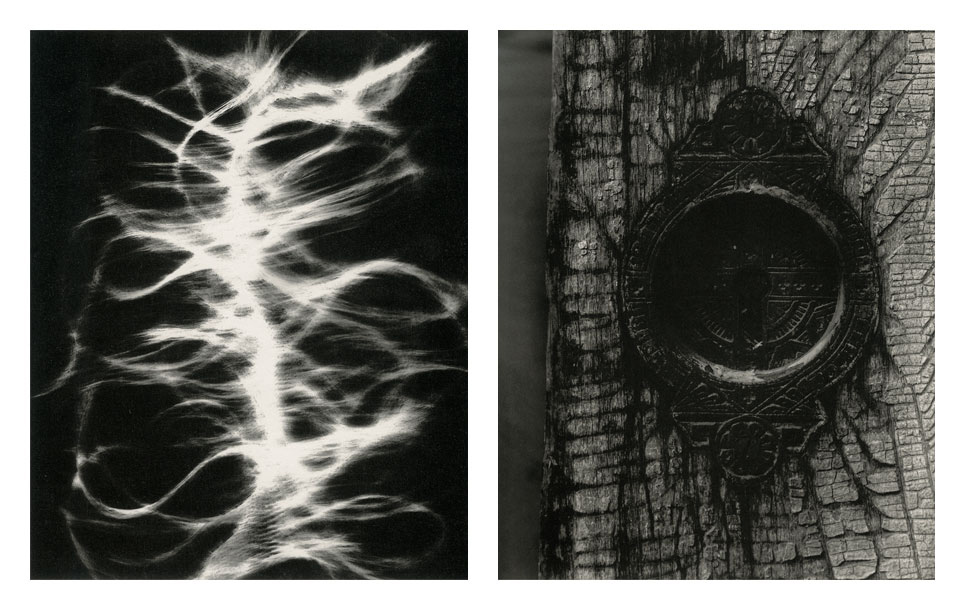Walter Chappell
Vintage Photographs 1954–1978
February 14 – April 1, 2000
Andrew Roth is pleased to announce the opening of an exhibition of vintage photographs by Walter Chappell. The 30 images, all taken between 1954 and 1978, are culled, predominantly, from the small group that survived the 1963 fire that destroyed most of Chappell’s prints and negatives.
Walter Chappell’s pictures follow in the tradition of American modernist photography, maintaining conceptual and aesthetic ties with Alfred Stieglitz, Edward Weston, and Ansel Adams. A contemporary of Minor White, Chappell used straight photography as a vehicle toward an altered sense of reality imbued with surrealist overtones. As a young man, Chappell studied architecture at Frank Lloyd Wright’s Taliesin West. Through his friendship with White, he was appointed chief curator at the George Eastman House in Rochester in 1957, a position he held for many years.
In the late 1940s, Chappell became a follower of the teachings of G. I. Gurdjieff; now in his late 70s, he has been actively involved in The Work for more than 50 years. Chappell’s understanding of Camera Vision, which, he claims, “operates as an intelligent function between the human eyes and the totality of understanding in a moment of active awareness,” is derived from Gurdjieff’s philosophy.
The exhibition catalogue, reproducing ten black-and-white photographs in tri-tone, includes a poem by Robert Creeley composed for Chappell in 1973 and “Time Lived,” an essay by Peter Bunnell, curator of photography at the Princeton Art Museum. Bunnell succinctly reviews Chappell’s work by stating that “Chappell has always believed firmly in the duality of the corporeal and the spirit … The fundamental principle in [his work] is that the tenuous connection to photographic reality is not severed. Each subject is re-presented in such a way that our perceptual limitation is expanded. Each image suggests an inner reality, a kind of scar of the past, a reflection of an act or event once lived.”


